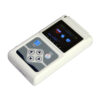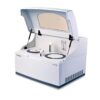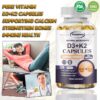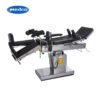- Number of Pieces: One Unit
- Application: Head
- Origin: Mainland China
- Properties: Rehabilitation Therapy Supplies
- Place of Origin: Jiangsu, China
- Brand Name: JIHE-TCM
- Model Number: rtmsbd00122lv
- Product Name: Transcranial Magnetic Stimulation
- Function: transcranial magnetic stimulation
- Usage: Stroke etc.
- Battery: built-in
- MOQ: 1
- OEM: Accpect
- Sample: Availabel
In order to better pass the customs, different countries will use different packaging methods flexibly.Anyway The product will be delivered to you complete and brand new.
Product Description





















Transcranial stimulator is used for the adjuvant treatment of ischemic cerebrovascular disease, neurosis and brain injury
diseases. Through the magnetic therapy cap, the equipment output specific rules of alternating electromagnetic fields to act on
brain cells and cerebrovascular, so as to change the metabolic environment in the focal area, increase the activity of enzymes
involved in metabolism, expand cerebrovascular, and promote blood circulation and establish collateral circulation. It can promote
the metabolism and enhance the repair ability of the damaged brain cells. Interference and inhibition of abnormal EEG and
magnetoencephalogenesis and transmission.
Scope of application
* It is suitable for the auxiliary treatment of ischemic cerebrovascular disease, neurosis (anxiety, neurasthenia, insomnia,
brain fatigue and other symptoms) and brain injury diseases.
Applicable departments
Department of Neurology, Neurosurgery, rehabilitation, Physiotherapy, etc.
Indication
* Neurosis (symptoms of anxiety/neurasthenia/insomnia/brain fatigue)
* Limb motor dysfunction
* Ischemic cerebrovascular disease
* brain-damaging diseases
* Cerebral palsy in children
* Migraine
* Parkinson
* Alzheimer’s disease
* Bipolar, depression, mania, etc
Application:
1. The nerves and healing diseases, cerebral hemorrhage recovery, cerebral infarction rehabilitation, limb dysfunction, the
language barrier, nervous headaches, toxic brain damage, anoxic brain damage, brain artery (before, during and after) insufficient
blood supply, stroke prevention, hemiplegia rehabilitation, senile dementia, brain atrophy, brain fatigue syndrome, Parkinson’s
disease (PD), epilepsy, etc.
2. Mental diseases: depression, autism, schizophrenia (negative symptoms), obsessive-compulsive disorder, mania, migraine,
neurasthenia, insomnia, cognitive dysfunction and other mental brain diseases.
3. Children’s development: children’s cerebral palsy, physical disorder, language development disorder, anger/sensory integration
disorder, autism, ADHD, tourette’s disease and other brain diseases produced during childhood development.
Prohibited use
1. Patients with bleeding tendency (acute stage of intracerebral hemorrhage, coagulation mechanism disorder, etc.)
2 patients with severe heart disease, severe hypertension and heart, liver, lung and kidney failure
3 patients using implantable electronic devices such as pacemakers
4 patients with intracranial infection or intracranial tumor
5. Patients with intracranial vascular metal stent implantation
6. Patients with unstable vital signs and fever
7. Patients with adverse reactions of electrotherapy and magnetic therapy
8. Patients with obvious changes in blood pressure, heart rate and respiration during treatment
9. Patients with open wounds and infections at the treatment site
10. Patients with cachexia, active pulmonary tuberculosis and cancer
11 severe psychosis, epilepsy
12. It is strictly prohibited for pregnant women
* Depression, insomnia, Parkinson’s disease, stroke — all goodD
Usage:
1-2 times a day, 20-30 minutes each time, 10 times as a course of treatment, 3 days between the course of treatment.The time and
course of treatment are for reference only.In the first course of magnetic therapy, the intensity of magnetic therapy should be
weak; in the second course, the intensity of magnetic therapy should be strong. If the intensity of magnetic therapy
feeuncomfortable, the intensity of magnetic therapy should continue to be weak.Frequency conversion vibration massage can be
adjusted according to their own comfort.
|
item
|
value
|
|
Properties
|
Rehabilitation Therapy Supplies
|
|
Place of Origin
|
China
|
|
|
Jiangsu
|
|
Brand Name
|
JIHE-TCM
|
|
Model Number
|
rtmsbd001
|
|
Product Name
|
rTMS
|
|
Function
|
transcranial magnetic stimulation
|
|
Usage
|
Stroke,adult and Children Insomnia Anxiety Depression Autism Brain
|
|
Battery
|
built-in
|
|
MOQ
|
1
|
|
OEM
|
Accpect
|
|
Sample
|
Availabel
|

















Reviews
There are no reviews yet.